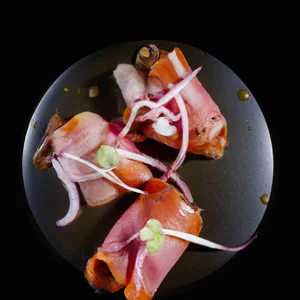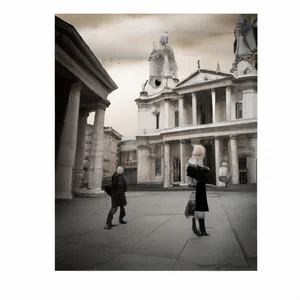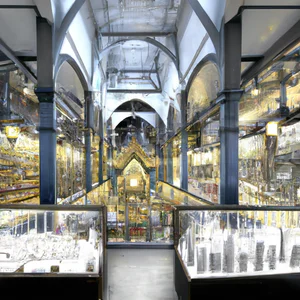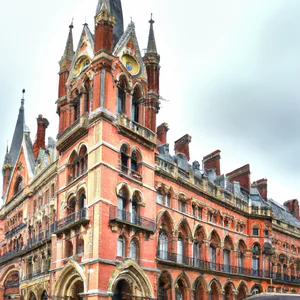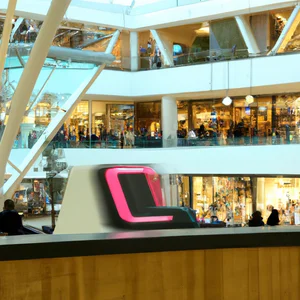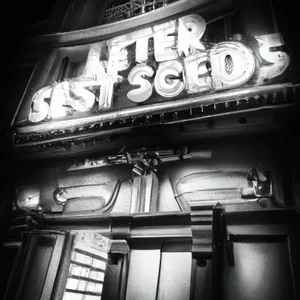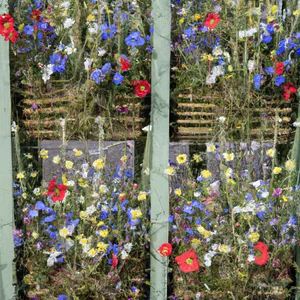Book your experience
Chinatown: a taste of the East in the heart of the West End
Chinatown: a little piece of the East in the heart of the West End
So, let’s talk about Chinatown, huh? It’s like stepping into another world, right there in the middle of the West End. When you set foot there, it almost feels like you’ve been catapulted into a kung fu movie – in short, the scent of spices envelops you and the red lanterns hang like if they were shooting stars.
The first time I went, I remember getting lost in the narrow streets, and, let me tell you, it was an experience not to forget! I tasted a dim sum that was so good I could have sworn it had been cooked by a master. And the people? There is an atmosphere that makes you feel at home, even if you have never set foot in China.
Then, there are those small, crowded shops where they sell everything: from aromatic teas - which are a real treat for the palate - to kitsch souvenirs which, honestly, I don’t know who would buy. Maybe some tourist looking for an original gift, who knows! But, well, everyone has their own tastes, right?
And do we want to talk about food? Oh god, sometimes I think my stomach is rooting for a one-way trip to Chinatown! Every time I go back, I discover something new. I’m not a great expert on Asian cuisine, but I always have the impression that every dish tells a story. Like that restaurant I tried last time, with its hand-pulled noodles. I tell you, it was like eating a poem!
In short, Chinatown is a place that makes you feel alive, with all those lights and sounds mixing together. Sure, maybe not ideal for those seeking tranquility, but hey, who wants calm when they can immerse themselves in such vibrant chaos? I think everyone should visit it at least once in their life. Maybe it won’t be for everyone, but for me it’s a real jewel in the heart of the city.
Chinatown: a taste of the East in the heart of the West End
The Bright Colors: Exploring the Lanterns of Chinatown
Walking along the streets of Chinatown, I always felt like I had been transported to another world. The first time I crossed the threshold of this vibrant neighborhood, my attention was immediately captured by the red lanterns dancing gently in the wind, creating a magical and welcoming atmosphere. Each lantern tells a story, a symbol of good fortune that invites visitors to explore the culinary and cultural wonders behind it.
Lanterns are not just decorations: they are an integral part of Chinese culture. On the occasion of Chinese New Year, the neighborhood lights up with thousands of these wonders, transforming the streets into a sea of colours. For those visiting Chinatown, it is imperative to have this experience during the holidays, when the city comes alive with dragon dances, music and fireworks.
An insider tip
Not everyone knows that Chinatown lanterns are handmade by local artisans, and some shops, like Wing Lee, offer workshops to learn how to make your own lantern. An activity not to be missed for those who want to bring home a piece of this culture.
The cultural impact of lanterns
Lanterns have a long history that is intertwined with Asian holidays and the tradition of welcoming benevolent spirits. This symbolism represents the resilience and continuity of the Chinese community in the West End, where Eastern culture blends with Western culture, creating a unique and fascinating environment.
Sustainability and responsibility
In the pursuit of more sustainable tourism, it is important to choose shops and workshops that use eco-friendly materials and responsible production practices. Many Chinatown artisans are engaged in this process and offer products that not only beautify the neighborhood but also respect the environment.
Immersion in the atmosphere
Imagine walking along the streets of Chinatown, surrounded by lanterns glowing in the dark, while the air is filled with the aroma of spices and delicious dishes. It is a sensorial experience that involves all your senses, transporting you to a corner of the East directly in the heart of London.
Activities to try
I recommend you visit the Chinatown Market to buy fresh and authentic ingredients, or take a guided tour that will take you to discover the history and traditions of this fascinating neighborhood.
Myths to dispel
A common myth is that Chinatown is just a place to eat Chinese food; in reality, it is a vibrant center of Asian culture and art, with galleries and shops offering a wide variety of products.
Final reflection
When you find yourself in Chinatown, with illuminated lanterns hanging above you, ask yourself: What story does each lantern tell? What dreams and hopes are kept in this corner of the world? This is the true spirit of Chinatown, a place where the East embraces the West End, offering us a taste of traditions and cultures that enrich our travel experience.
Culinary delights: where to find the best dim sum
An unforgettable experience
I still remember the first time I stepped foot in a dim sum restaurant in Chinatown. The vibrant air was filled with a mix of aromas: the scent of steam and spices enveloped my senses as the waiters moved quickly between the tables, pushing carts loaded with delicacies. Each dish was a work of art, and I didn’t know where to start. Between laughter and chatter, I discovered that dim sum is not just food, but a social experience that unites people around tables full of flavors and stories.
Where to find the best dim sum
For an authentic dim sum experience, I recommend visiting Yum Cha restaurant. Located in the heart of Chinatown, this place is known for its generous portions and fresh, freshly prepared dishes. Don’t forget to try the siu mai (meat dumplings) and har gow (prawn dumplings), considered among the best in the city. According to local reviews, the quality and freshness of the ingredients are what sets this restaurant apart from the competition. For further suggestions, you can consult the Chinatown Food Guide website, where you will also find a map of the best restaurants in the area.
An insider tip
If you want an even more authentic experience, look for “dim sum brunches”. Many restaurants offer a dim sum buffet on the weekend, where you can enjoy a variety of dishes for a fixed price. This way, you’ll have the opportunity to enjoy all your favorites without the fear of ordering too much or too little.
A dive into history
Dim sum has a history dating back centuries, when travelers along the Silk Road stopped at teahouses to enjoy light snacks and tea. This tradition has survived and evolved, becoming a symbol of Chinese culinary culture. Today, dim sum is an experience that reflects Chinatown’s rich heritage and fusion of cultures.
Sustainability and responsibility
When choosing a restaurant for your dim sum, consider opting for ones that use local ingredients and sustainable practices. Many restaurants in Chinatown are adopting eco-friendly methods, such as using biodegradable packaging and sourcing ingredients from local suppliers. This not only supports the local economy, but also contributes to the health of the planet.
A journey through flavors and colors
Imagine sitting at a table, surrounded by friends, as steaming plates of dim sum are presented in front of you. The bright colors of the dishes, the enveloping aromas and the laughter that fills the air create a magical atmosphere. Each bite is a journey into flavors, leading you to discover Chinese culinary tradition in a completely new way.
An activity not to be missed
For an experience unforgettable, take part in a dim sum cooking workshop. Many restaurants offer courses where you can learn to prepare your favorite dishes, guided by expert chefs. This will not only enrich your culinary knowledge, but also allow you to bring a piece of Chinese culture home.
Myths and misconceptions
A common misconception is that dim sum is just lunch. In fact, you can enjoy it any time of the day! In fact, many Chinese consider dim sum an ideal option for a casual dinner or weekend brunch.
A final reflection
Next time you’re in Chinatown, ask yourself: What makes dim sum so special to me? Whether it’s sharing with friends or the pleasure of discovering new flavors, this dining experience is an opportunity to connect with culture and the local community. Don’t miss the opportunity to immerse yourself in this world of vibrant colors and flavors!
Hidden History: The West End’s Chinatown Past
A personal journey through time
I still remember the first time I walked through the streets of Chinatown in the West End. It was a spring evening and the red lanterns, adorned with symbols of prosperity, illuminated the path as if they were fallen stars. As I was walking, an old gentleman named Mr. Wong stopped me and began telling me stories of a past that few people know about. His trembling voice conveyed his passion for a community that, despite his challenges, has managed to keep its cultural heritage alive.
A dive into history
Chinatown in the West End is not just a place of bustling restaurants and souvenir shops, but an area that bears the marks of a long and often difficult history. Founded in the 19th century, the Chinese community has faced discrimination and isolation, but has managed to create a unique identity that has stood the test of time. Today, visitors can explore the Chinese Heritage Centre, where interactive exhibits tell the story of Chinese immigrants and their contribution to British culture.
An insider tip
A tip that few people know is to visit the Chinese New Year Festival, which is held every year in February. Not only is it an opportunity to see the amazing parade with dancing dragons and drums, but it is also a time when local residents open their homes and kitchens to share culinary traditions and stories. It’s an authentic way to immerse yourself in the culture and discover the roots of Chinatown.
The cultural impact
The history of Chinatown is a reflection of resilience and transformation. The community has been able to integrate its traditions with those of the United Kingdom, creating a melting pot of cultures. Holidays such as Chinese New Year not only celebrate Chinese culture, but also attract visitors from all over the world, thus contributing to the local economy and cross-cultural understanding.
Sustainability and responsible tourism
When visiting Chinatown, it’s important to do so responsibly. Many restaurants and shops are committed to using local ingredients and sustainable practices. By opting for culinary experiences that showcase traditional cuisine, such as cooking classes at Chinatown Cookery School, you not only support the local economy, but you also help preserve culinary traditions.
An experience worth trying
For an authentic experience, I recommend taking a guided history tour of Chinatown. Several local organizations offer tours that not only explore iconic locations but also reveal hidden corners and forgotten stories. It’s an opportunity to see Chinatown from a new perspective.
Myths and misconceptions
A common misconception is that Chinatown is just a tourist destination. In reality, it is a living, breathing community, with a population that continues to contribute to the city’s culture and economy. It is essential to approach this place with respect and curiosity, recognizing its complexity.
Final reflection
After exploring the streets of Chinatown and listening to the stories of those who live there, I asked myself: how much do we really know the communities around us? Chinatown is not just a place to visit, but a history to discover and a culture to respect. Next time you’re in the West End, take a moment to immerse yourself in its deep and fascinating history. What secrets could it reveal to you?
Authentic markets: a journey through spices and craftsmanship
An unforgettable meeting
I still remember my first day in Chinatown, when I ventured into a local market. The air was filled with exotic aromas, a mix of spices, fresh herbs and sweet delicacies. As I walked among the colorful stalls, I came across an elderly spice seller, whose warm and welcoming smile invited me to discover the secrets of his blends. With an expert gesture, he mixed turmeric, chili pepper and ginger, telling me stories of how these spices were used in Asian culinary tradition. That moment was an opening to a world of flavors and traditions that I could never have imagined.
Where to find the markets
Chinatown is dotted with authentic markets offering a wide range of spices and local crafts. One of the best known is the Chinatown Market, located in [address], where every corner is an explosion of colors and scents. Here, in addition to fresh spices, you can find handcrafted products, such as pottery and textiles, that tell stories of ancestral skills. Don’t forget to visit Jade Market, famous for its jade jewelry and art objects that reflect Chinese culture.
An insider tip
A tip that few know is to visit the markets during the early hours of the morning. Not only will you have access to the freshest produce, but you can also witness the ritual opening of the stalls and exchange a few words with the sellers, who are often happy to share anecdotes about their wares.
The cultural impact
Chinatown markets are not just places of commerce; they are also cultural centers that preserve immigrant traditions and practices. These historic spaces have helped keep culinary and artisanal customs alive, acting as a bridge between the past and the present. With every purchase, visitors not only take home a piece of culture, but also support local communities.
Responsible tourism practices
When visiting Chinatown markets, consider the importance of sustainable tourism practices. Choosing to buy from local sellers rather than international chains helps support the local economy and preserve traditions. Furthermore, opting for products packaged with recyclable or reusable materials helps reduce environmental impact.
Immerse yourself in the atmosphere
As you stroll through the stalls, let yourself be transported by the bright colors and lively sounds of Chinatown. The shouts of vendors, the intoxicating scent of spices and the buzz of conversations in different languages create a vibrant and welcoming atmosphere. This is the beating heart of the community, a place where every corner tells a story.
An activity worth trying
If you fancy an immersive experience, join a cooking workshop at one of the local restaurants. Many of them offer courses where you can learn to use fresh spices purchased in the markets to prepare traditional dishes. It’s a fantastic way to delve into food culture and bring a piece of the Chinatown experience home.
Myths to dispel
A common misconception is that Chinatown is just a tourist attraction for exotic foods. In fact, markets are an essential part of daily life for many residents, who shop there just like in any other neighborhood. Discover these places authentic will allow you to see Chinatown in a new light.
A final reflection
Each Chinatown market is a microcosm of stories and cultures. I invite you to reflect on how your trip can go beyond simple tourism, embracing a deeper connection with local traditions. What flavors and stories will you take with you at the end of your visit?
Cultural events: experience Asian holidays
An unforgettable memory
I still remember the first time I attended Chinese New Year in Chinatown. The streets were transformed into a sea of bright colors, with red lanterns swaying gently in the wind and drums beating in the distance. The atmosphere was electrifying, and every corner of the city seemed to pulsate with life. That day, I learned that Asian holidays are not just celebrations, but also an opportunity to unite communities and celebrate traditions with joy and respect.
Practical information
Chinatown is famous for its vibrant and inclusive celebrations, which attract visitors from all over the world. Events such as Chinese New Year and Lantern Festival offer a unique experience. In 2023, Chinese New Year will be celebrated on January 22, so it is advisable to plan your visit in advance so as not to miss the festivities. For updated information, consult the official Chinatown website, where you will find the program of events and planned activities.
An insider tip
A little-known but fascinating activity is taking part in the dragon awakening ceremonies, which take place in the days leading up to New Year’s Eve. These ceremonies, which take place in local temples, are not only spectacular to see, but will allow you to immerse yourself deeply in local culture and traditions.
Cultural and historical impact
Asian holidays in Chinatown are not just entertainment events; they represent a deep connection with the history and traditions of the Asian communities that populate the area. Chinese New Year, for example, symbolizes a new beginning and hope for a prosperous year, while the Lantern Festival celebrates the end of the holidays and spiritual renewal. These events are a tribute to the resilience and vitality of the cultures that have shaped Chinatown.
Sustainable tourism
Attending cultural events can also be a responsible way to discover Chinatown. Opt for activities that support local artists and artisans, and try to use eco-friendly transportation to get around. Find out about the sustainability practices of the various events, so you can contribute positively to the community.
An experience worth trying
Don’t miss the opportunity to taste the culinary specialties offered during the holidays. Chinatown’s markets and restaurants offer traditional dishes such as pork dumplings and mochi, prepared especially for the celebrations. Stop at a local restaurant for a festive lunch and be surprised by the authentic flavours.
Common myths
A common misconception is that Asian holidays in Chinatown are exclusively for the Asian community. In reality, these celebrations are open to all and welcome visitors from all backgrounds. Participating is a way to learn and appreciate cultural diversity, contributing to a sense of unity and mutual respect.
Final reflection
Next time you find yourself in Chinatown during a holiday, take a moment to observe. How rich is the story behind every lantern, every dish and every dance? Perhaps, Chinatown’s true treasure lies not only in its traditions, but also in its ability to bring people together through shared experiences. What is your favorite way to celebrate culture during your travels?
Sustainability in Chinatown: How to Travel Responsibly
A personal experience in the heart of Chinatown
While walking through the lively streets of Chinatown one spring afternoon, I was struck by an art installation made from recycled materials. It was a sculpture of a dragon, a symbol of Asian culture, created by local artists to raise awareness of sustainability. That vision made me reflect on how important it is to travel responsibly and how every small gesture can contribute to preserving this corner of the world so rich in history and culture.
Practical and up-to-date information
Chinatown is a microcosm of tradition and innovation, where sustainability is intertwined with daily life. Several local restaurants and shops are adopting eco-friendly practices, such as using organic ingredients and reducing plastic. Places like Chinatown Community Market offer local, farm-to-table produce, allowing visitors to enjoy authentic culinary delights without compromising the environment. For more information, I recommend visiting the Chinatown Business Association website, which provides updates on sustainable events and initiatives.
Unconventional advice
If you want to immerse yourself in local culture and support the local economy at the same time, take part in a lantern-making workshop. These courses, often led by local artisans, will not only allow you to learn a thousand-year-old tradition, but also to use recycled materials, making the experience even more meaningful.
Cultural and historical impact
Chinatown is not just a shopping mall; it is a symbol of the resilience and adaptation of Asian communities throughout history. Sustainability here is not just a trend, but a deep-rooted value, which reflects the importance of keeping traditions alive while respecting the environment. The ecological practices that emerge today are the result of decades of cultural evolution, where respect for nature has always been a fundamental element.
Responsible tourism practices
Traveling responsibly also means respecting local cultures. In Chinatown, avoid buying mass-produced souvenirs; instead, opt for local craftsmanship, which supports artists and their families. Additionally, use public transportation or bicycle to explore the neighborhood, thus reducing the environmental impact of your trip.
A vivid atmosphere
Imagine strolling along the bustling streets of Chinatown, surrounded by a symphony of bright colors and intoxicating scents. Street vendors offer you authentic delicacies, while the sound of temple bells mixes with the buzz of daily life. It is an experience that stimulates all the senses and invites us to reflect on the importance of preserving this cultural treasure.
An activity worth trying
I recommend committing to a food tour that focuses on sustainable restaurants and local markets. This will allow you to savor typical dishes while learning the story behind each bite, all with a view to sustainability.
Myths to dispel
A common misconception is that sustainability in China is a new or little-practiced concept. In reality, many Asian communities have always had a strong connection with nature and an intrinsic respect for the environment, even if it is often not documented in traditional tourist circuits.
Final reflection
After exploring the wonders of Chinatown, I invite you to consider: How can you integrate sustainability into your daily life? Every step towards responsible travel not only enriches your experience, but also helps protect unique places like Chinatown for future generations.
A corner of peace: secret gardens to discover
During one of my latest explorations in Chinatown, I found myself, almost by chance, in a hidden garden that looked like something out of a novel. It was a sunny afternoon, and as I strolled through the crowded streets, the sound of traffic and the voices of vendors faded as I approached this corner of tranquility. There was no sign indicating its presence, but the heady scent of flowers and spices guided me towards a small wooden door, adorned with Chinese decorations. Once I crossed the threshold, I found myself in a world where time seemed to have stopped.
Practical information
The secret gardens of Chinatown, such as the Dragon Garden, are real refuges from the urban frenzy. Often, these green spaces are home to traditional Chinese plants, ponds and meandering paths, offering visitors an experience of relaxation and contemplation. I recommend visiting the Dragon Garden in the spring months, when the flowers are in full bloom. For up-to-date information on opening hours and special events, you can check the official Chinatown website or ask at local tourist information centers.
Unconventional advice
Here’s a secret that few people know: if you stray from the main paths and venture into small streets, you may come across community gardens run by local residents. These spaces, often overlooked by tour guides, can give you an authentic experience and the chance to interact with the community. Don’t forget to bring a camera with you; the colors and details of these gardens can offer you breathtaking shots.
Cultural and historical impact
Gardens have deep cultural significance in many Asian traditions, representing a balance between nature and architecture. They are spaces for meditation and reflection, where the philosophy of feng shui is applied to create harmony. Their presence in Chinatown not only enriches the urban landscape, but also serves as a testament to the history and traditions that Chinese migrants brought with them.
Sustainability and responsible tourism
When visiting these gardens, remember to respect your surroundings. Many of these spaces are managed by volunteers who work tirelessly to maintain the beauty and biodiversity of the place. Avoid trampling flowerbeds and, if possible, participate in clean-up or gardening events. In this way, you will help preserve these peaceful corners for future generations.
Activities to try
I recommend spending a morning in the Dragon Garden with a book in hand or, better yet, taking part in one of the tai chi sessions held regularly. It’s a perfect way to immerse yourself in the local culture and find inner balance.
Myths and misconceptions
A common misconception is that Chinatown is just a busy market and restaurant area. In fact, secret gardens and green spaces are an integral part of Chinatown’s daily life, offering a haven for reflection and community. Don’t let appearances fool you; every corner of this neighborhood has a story to tell.
Final reflection
Next time you visit Chinatown, I invite you to take a moment to discover one of these secret gardens. What story awaits you behind those hidden doors? In such a fast-paced world, finding a corner of peace is a priceless treasure, and Chinatown Gardens may offer exactly what you need.
A journey through bright colors: the lanterns of Chinatown
I still remember the first time I set foot in Chinatown, in the beating heart of London’s West End. The red lanterns hanging from the roofs, illuminated by a warm light, created an atmosphere that seemed almost magical. Every corner was a living painting, where red, yellow and green mixed in an explosion of colors that captured the eye and the heart. This visual spectacle is not just a matter of beauty; it is a profound symbol of the culture and traditions that are intertwined in this unique place.
Lanterns: symbol of hope and prosperity
Chinatown lanterns are not simply decorations; they represent a link with Chinese culture. Traditionally, red lanterns symbolize luck, light and prosperity. During Chinese New Year celebrations, the streets are filled with these lanterns, creating a festive atmosphere that attracts visitors from all over the world. According to an article from Time Out London, the Chinese New Year parade is one of the largest outside of China, a clear sign of the importance of this event for the local community.
An insider tip
If you want an authentic, little-known experience, I recommend visiting Chinatown during the week leading up to Chinese New Year. Not only will you be able to see the lanterns in all their glory, but you will also have the opportunity to witness the preparations for the celebrations. You might even come across a workshop of local artisans making lanterns, a hidden treasure that few tourists know about.
A profound cultural impact
The lanterns of Chinatown are an example of how Chinese culture has integrated into London life. This merger has not always been easy; the neighborhood has faced challenges in maintaining its identity in the face of an ever-changing world. However, the lanterns remain a symbol of resistance and unity, a beacon of hope in a rapidly changing urban context.
Sustainable tourism and responsibility
When exploring Chinatown, remember the importance of respecting local traditions. Choose restaurants and shops that support the community, perhaps opting for dining experiences that use fresh, local ingredients. In this way, you will help preserve the culture and economy of the place, while enjoying the beauty of the lanterns that illuminate the streets.
An experience not to be missed
Don’t miss the opportunity to enjoy dim sum in one of Chinatown’s historic restaurants, such as the famous Yauatcha, where you can savor traditional dishes surrounded by these wonderful lanterns. The contrast between the delicious food and the vibrant atmosphere will leave you speechless.
A common misconception
Many think that Chinatown is just a tourist stop, but it is much more. It is a living community, with a rich history and deep culture. Lanterns are not just a visual attraction, but represent a world of meanings and cultural connections.
Final reflection
As you stroll among the lanterns of Chinatown, I invite you to reflect on how important the small details that make up our travel experience are. Every lantern tells a story, every restaurant preserves a tradition. Which story will strike you most during your visit?
Art and culture: galleries that tell oriental stories
A journey through colors and stories
I still remember the first time I walked into one of the art galleries in Chinatown. The walls were adorned with works that seemed to dance under the warm light of the red lanterns, creating an almost magical atmosphere. I found myself contemplating a painting that told the story of an ancient Chinese legend, while the delicate sound of a guzheng (a traditional Chinese musical instrument) filled the air. In that moment, I understood that Chinatown is not just a place of passage, but a true crossroads of cultures and histories.
Where to find the galleries
Chinatown is dotted with small art galleries and artists’ studios, many of which are run by talented local creatives. A practical tip: don’t limit yourself to visiting the best-known galleries; explore even the most hidden ones. For example, the Chinatown Art Gallery is a little-known gem that displays contemporary works that reflect Asian traditions. Here, you can also find opening events, where artists and curators share their experiences and stories.
An insider tip
If you are looking for a unique experience, ask to participate in one of the workshops organized by the galleries. Traditional calligraphy or painting courses are often held, where you can learn ancient techniques directly from the artists. Not only will you have a tangible memento of your visit, but you’ll also have the opportunity to bond with the local arts community.
A profound cultural impact
Chinatown is a clear example of how art can act as a bridge between different cultures. The works you’ll find here not only celebrate Asian heritage, but also address universal themes like identity and integration. This cultural dialogue is especially important in a time when communities are coming together to address global challenges.
Sustainability and art
Many artists and galleries in Chinatown adhere to sustainable practices, using recycled materials for their works or promoting carbon-neutral events. Participating in these initiatives not only enriches your experience, but also supports responsible tourism that enhances and protects local culture.
An experience not to be missed
Don’t miss an excursion to the Chinese Arts Centre, where you can immerse yourself in exhibits that celebrate China’s rich history and artistic traditions. This center is also a meeting place for cultural events, where you can attend dance, music and theater performances.
Myths to dispel
A common misconception is that art in Chinatown is limited to stereotypical depictions of Asian culture. In fact, you’ll find a wide range of artistic expressions that challenge these expectations, reflecting the diversity of experiences and stories that characterize the community.
A personal reflection
Walking through the galleries of Chinatown, I often asked myself: what story is told through art? Each work seems to have its own voice, and invites me to reflect on how culture can unite people, overcoming barriers and creating a sense of belonging. Next time you visit Chinatown, take a moment to listen to the stories these works have to tell. It will be a journey that will enrich not only your mind, but also your heart.
Local Experiences: Take an Asian cooking class
A journey through aromas and flavors
I still remember my first experience in an Asian cooking class in Chinatown, where the enveloping scent of Thai basil mixed with the intense scent of soy sauce. It was a Saturday morning and the streets were bustling with families and tourists, but there I was, surrounded by a warm and welcoming community, ready to discover the culinary secrets behind the dishes I loved so much. The chef, an older lady with an infectious laugh, guided us through preparing authentic pad Thai, revealing tricks that only an expert would know.
Practical information
Today, Chinatown offers a variety of cooking classes, suitable for all skill levels. From renowned schools such as Chinatown Cooking School to small family shops, the options are many. These courses not only teach you how to prepare traditional dishes, but often also include a visit to the local market to purchase fresh ingredients. I advise you to book in advance, especially during the holidays, when demand is high. You can find more detailed information on websites like Visit Chinatown or Local Eats.
An insider tip
One of the secrets I learned during the course was to use “fish sauce” as a key ingredient. Many avoid it for fear of a too strong flavor, but in reality, if used in moderation, it elevates the dish to a higher level. Don’t forget to bring home a jar of artisanal fish sauce, the quality of which can make the difference in your dishes.
Cultural reflection
Asian cuisine is not just a culinary art, but a reflection of the culture and history of its peoples. Each dish tells a story, from the origin of the ingredients to family traditions. Taking a cooking class in Chinatown offers you not only the opportunity to learn, but also to connect with the local community and appreciate their cultural roots.
Sustainability and responsibility
Many cooking classes in Chinatown are committed to sustainability, using fresh, local ingredients. Choosing courses that promote ecological practices is a way to contribute to responsible tourism, respecting culinary traditions and the environment.
Soak up the atmosphere
Imagine being surrounded by bright colors and enveloping aromas, while you handle the knife to slice fresh vegetables. Sunlight filters through the windows of the kitchen lab, and the sound of woks crackling fills the air. Every cut, every mix is a step towards creating a dish that is not just food, but a sensorial experience.
An activity worth trying
I recommend taking the Wok & Roll cooking class, which offers special sessions on regional Asian dishes. It’s an experience that will not only delight your palate, but will also leave you with lasting memories to share with friends and family.
Myths and misconceptions
Asian cuisine is often thought to be complicated and requires ingredients that are difficult to find. In fact, many recipes are simple and accessible, with ingredients you can easily find at local markets, especially in Chinatown. Don’t be intimidated; the beauty of the kitchen is also in its simplicity.
A final reflection
After taking an Asian cooking class, I asked myself: how can we continue to honor and celebrate the culinary traditions of different cultures, even at home? The answer is simple: experimenting, sharing and, above all, enjoying. What are you waiting for to test yourself in the kitchen and discover the wonders of Chinatown?

 Architecture and Design
Architecture and Design Cities and Regions
Cities and Regions Culture and History
Culture and History Events and Festivals
Events and Festivals Fashion and Shopping
Fashion and Shopping Food and Wine
Food and Wine Nature and Adventure
Nature and Adventure Unique Experiences
Unique Experiences




















